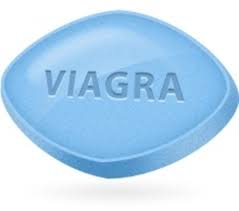
The Importance of Antikoagulancia in Modern Medicine
Anticoagulants, or Antikoagulancia antikoagulanty, are essential medications used to prevent and treat blood clots. These medicines play a crucial role in various medical fields, including cardiology, hematology, and surgery. This article will delve into the different types of anticoagulants, their mechanisms of action, indications for use, and potential side effects, providing a comprehensive overview of their significance in modern healthcare.
Understanding Antikoagulancia
Anticoagulancia refers to a group of medications designed to reduce blood clot formation. These medications inhibit various components of the coagulation cascade, a series of biochemical reactions that lead to clotting. By preventing clot formation, anticoagulants help manage conditions like deep vein thrombosis (DVT), pulmonary embolism, and stroke, among others.
Types of Antikoagulancia
There are two main categories of anticoagulants: vitamin K antagonists and direct oral anticoagulants (DOACs).

Vitamin K Antagonists
The most well-known vitamin K antagonist is warfarin. It works by disrupting the synthesis of vitamin K-dependent clotting factors in the liver. While effective, warfarin requires regular blood monitoring through INR (International Normalized Ratio) testing to ensure patients remain within a therapeutic range, minimizing the risk of bleeding complications.
Direct Oral Anticoagulants (DOACs)
DOACs, which include medications such as apixaban, rivaroxaban, and dabigatran, offer a more convenient alternative to warfarin. They require less monitoring and have fewer dietary restrictions. DOACs directly inhibit specific coagulation factors—factor Xa or thrombin—thereby preventing clot formation with a more predictable pharmacological profile.
Mechanisms of Action
Anticoagulants work through various mechanisms:
- Inhibition of Coagulation Factors: As mentioned, warfarin inhibits vitamin K-dependent factors (II, VII, IX, and X), while DOACs directly inhibit factor Xa or thrombin.
- Inhibition of Platelet Activation: Some anticoagulants, in conjunction with antiplatelet medications, help prevent platelet activation, further reducing clot formation.
- Enhancement of Antithrombin Activity: Certain anticoagulants increase the activity of antithrombin, a natural inhibitor of coagulation factors.
Indications for Antikoagulancia Use

Anticoagulants are prescribed for various medical conditions:
- Atrial Fibrillation: Patients with atrial fibrillation are at an increased risk of stroke due to the potential for blood clots to form in the heart. Anticoagulants reduce this risk significantly.
- Venous Thromboembolism: Conditions like DVT and pulmonary embolism are commonly treated with anticoagulants to dissolve clots and prevent new formations.
- Post-Surgery: After certain surgical procedures, patients are often placed on anticoagulants to reduce the risk of thrombosis.
- Myocardial Infarction: In the aftermath of a heart attack, anticoagulants may help prevent future clot-related events.
Potential Side Effects
While anticoagulants are essential, they also come with potential risks and side effects:
- Bleeding Risks: The most significant risk associated with anticoagulants is bleeding. Patients may experience minor bleeding, such as nosebleeds or gastrointestinal bleeding, or more severe complications.
- Drug Interactions: Anticoagulants can interact with various medications, altering their effectiveness or increasing bleeding risk.
- Monitoring Requirements: While DOACs generally require less monitoring than warfarin, patients must still be vigilant about their dosage and any potential side effects.
Conclusion
Antikoagulancia are a cornerstone of modern medicine, offering significant benefits in the management of various cardiovascular and thromboembolic conditions. Understanding the types, mechanisms, indications, and associated risks of anticoagulants enables both healthcare providers and patients to make informed decisions regarding their use. As research continues, it is anticipated that newer anticoagulants will provide even safer and more effective options for managing coagulation disorders.
In conclusion, the role of anticoagulants in preventing serious health complications cannot be overstated. Their proper application is vital in enhancing patient outcomes and ensuring safety in managing conditions that pose a significant risk of thromboembolic events.
